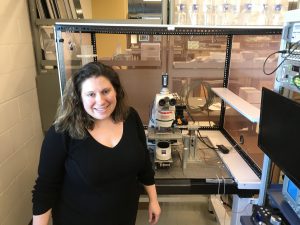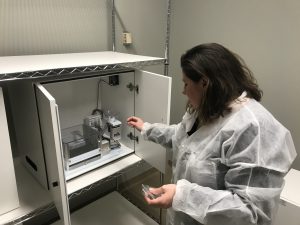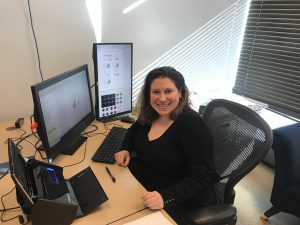
Julia Lemos, the newest addition to the University of Minnesota Medical Discovery Team, is researching the connection between mental health issues and substance abuse.
By Haley Breshears
When Julia Lemos was 14 years old, she lost her cousin to suicide.
The experience became more than a family loss for her. It piqued her interest in neuropsychiatric disorders and led to a greater quest to understand the relationship between depression, stress and self-medicating through drugs and alcohol.
Today, that lifelong passion has led Lemos to Minnesota, where she is the newest member of the University of Minnesota’s Medical Discovery Team on Addiction. The team uses a multidisciplinary approach to research addiction treatment.
Early on, in her research as a graduate student at the University of Pennsylvania, Lemos quickly saw the connection between stress, depression and substance use.
“The depression epidemic is contributing to the opioid epidemic,” she said.

Lemos’ research focuses on both depression and substance abuse, which she believes are heavily interconnected.
“The idea is that perhaps instead of treating the alcohol abuse itself or the drug abuse itself, that maybe treating the depression might be kind of a two-fer,” she said. “You’re treating the depression but by virtue of doing that you’re treating the addiction.”
Lemos’ decision to come to Minnesota was surprising even to herself. “I’m an East Coast girl,” she said.
Prior to applying for the neuroscience department at the University of Minnesota, she had been going on many other interviews. She only interviewed at Minnesota out of respect, she said, but also knew the university had impressive substance use research.
When Lemos interviewed at Minnesota, she had not yet heard of the MDT, a state-funded initiative backed by Gov. Mark Dayton. The MDT on Addiction receives $3 million a year and will last for 10 years.
Lemos decided to apply for the university’s department of neuroscience the night the Chicago Cubs won the World Series. She was out with her friends in Washington D.C., when one of them mentioned a job opening in Minnesota.
“I’m gonna freeze my ass off there,” she said. “What am I gonna do?” But she reluctantly went out for the interview anyway and was impressed not only with the department, but also with the people in it.
“I was really, really sick, and these people took care of me and were so kind and loving to me,” she said. “They instantly endeared themselves to me. They were really impressive.”

Lemos soon accepted a position with the MDT, impressed by the resources. She said MDT’s multidisciplinary approach helps her collaborate with other neuroscientists, neurologists, pharmacologists and psychiatrists to expand her work beyond the narrow realm of merely looking at how stresses or drugs change the way electrical currents affect brain cells — something that forms the basis of her studies.
Across the hall are researchers from different backgrounds who can lend a perspective on depression-induced addiction as well as the many other facets of addiction.
“It is pretty unique to have a designated space and to have a consortium of department chairs who have come together to form this,” Lemos said. “It was a chance to be part of something special and once in a lifetime.”
